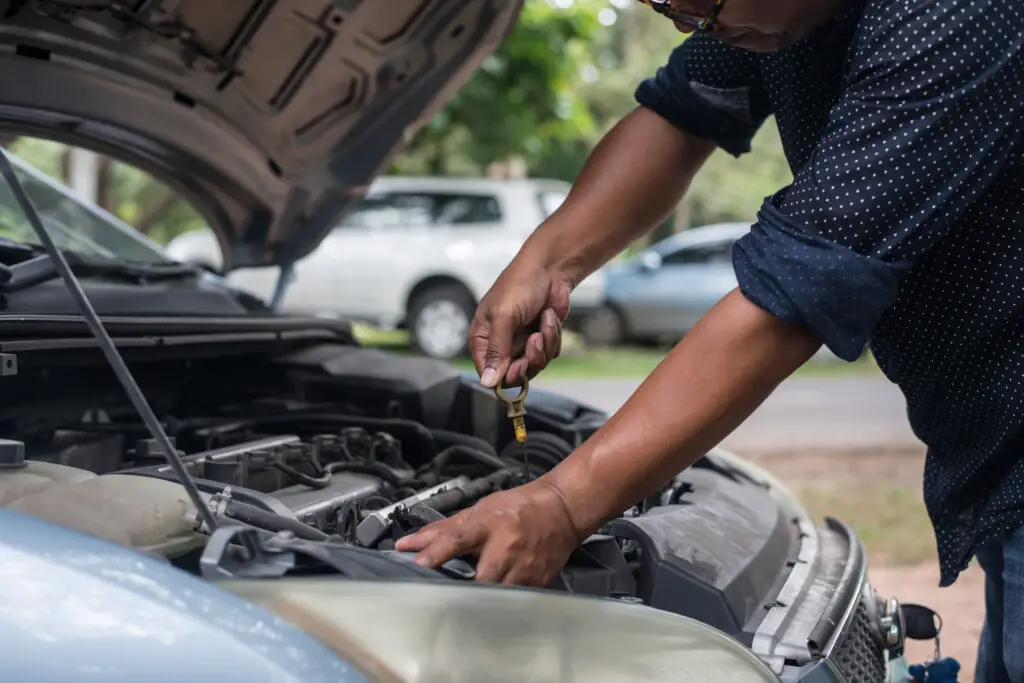Maintaining the health of your car’s engine hinges on a simple but crucial habit: checking the oil. Engine oil is the lifeblood of your vehicle, reducing friction, preventing overheating, and ensuring smooth operation. But when it comes to checking your car’s oil level, one question often stumps even seasoned drivers: Should the car be on or off?
Spoiler alert: The answer isn’t as straightforward as you might think. Let’s break it down to ensure you get accurate readings and keep your engine in peak condition.
The Short Answer
To check your car’s oil level accurately, the engine should be off, and the vehicle should be on a level surface. In most cases, you’ll also need to wait a few minutes after turning off the engine to allow the oil to settle in the pan.
But why is this the case, and are there exceptions? Let’s dive deeper.
Why the Engine Needs to Be Off
Here’s why turning off the engine is essential when checking oil levels:
- Oil Settles in the Pan:
When the engine is running, oil circulates throughout the system, lubricating components like pistons and camshafts. Turning off the engine allows the oil to drain back into the oil pan, where it can be measured accurately. - Safety First:
Checking oil with the engine running exposes you to moving parts and hot surfaces. The spinning belts, fans, and high temperatures under the hood can lead to burns or injuries. - Consistent Readings:
Measuring oil while the engine is off provides a stable, standardized reading. Running engines can cause oil to splash or stick to components, leading to inconsistent results.
When to Check the Oil
Timing matters when checking your oil. Follow these steps for the best results:
- Park on a Level Surface:
If your car is on an incline, the oil level in the pan may not be accurate. Always park on flat ground. - Turn Off the Engine:
Shut off the car and wait 5–10 minutes. This gives the oil enough time to settle in the pan. - Pull the Dipstick:
Open the hood, locate the dipstick (usually marked with a bright handle), and pull it out. - Clean and Reinsert:
Wipe the dipstick clean with a lint-free cloth, then reinsert it fully into its tube. Pull it out again to check the oil level.
Are There Exceptions?
While most cars require the engine to be off for an oil check, some exceptions exist:
- Certain Automatic Transmissions:
Some vehicles with automatic transmissions require checking the transmission fluid with the engine running and warmed up. However, this doesn’t apply to engine oil. Always refer to your owner’s manual for specific instructions. - Diesel Engines:
Some diesel engines might have unique procedures for oil checks, but even here, the general rule of turning off the engine applies. - High-Performance Vehicles:
Certain high-performance or exotic cars might have unconventional oil-checking methods. If you own one of these, consult the manual or a trusted mechanic.
Hot or Cold?
Another common question is whether the engine should be warm or cold when checking oil. The answer: warm but not running.

- Why Warm? Engine oil expands slightly when hot, giving a more accurate reading when checked at operating temperature.
- Why Not Cold? If the car has been sitting idle for an extended period, the oil level might appear lower than it actually is.
Signs You’re Low on Oil
Even if you’re diligent about regular checks, knowing the symptoms of low oil is crucial:
- Warning Light: A low oil or oil pressure warning light on your dashboard is a clear sign to check immediately.
- Engine Noise: Knocking, ticking, or grinding sounds might indicate insufficient lubrication.
- Overheating: Without enough oil to reduce friction, your engine may overheat.
How Often Should You Check Your Oil?
Regular oil checks can prevent costly repairs. As a general rule:
- Monthly Checks: Make it a habit to check your oil at least once a month.
- Before Long Trips: Always check your oil level before hitting the road for an extended journey.
What If the Oil Level Is Low?
If you find your oil level below the recommended line:
- Top It Off: Add the appropriate type of oil as specified in your owner’s manual. Pour slowly and recheck the level after adding.
- Inspect for Leaks: Persistent low oil levels might indicate a leak. Look for oil stains under your car or around the engine bay.
- Seek Professional Help: If adding oil doesn’t resolve the issue or you suspect a deeper problem, visit a mechanic.
Final Thoughts
Checking your car’s oil is a quick and straightforward task that pays dividends in engine health and longevity. Always perform this task with the engine off, on level ground, and after allowing a few minutes for the oil to settle.
By mastering this basic maintenance skill, you’ll save yourself the hassle of breakdowns, costly repairs, and unnecessary stress. So the next time you pop the hood, remember: engine off, dipstick out, and peace of mind in.
Discover more from Chikwem
Subscribe to get the latest posts sent to your email.